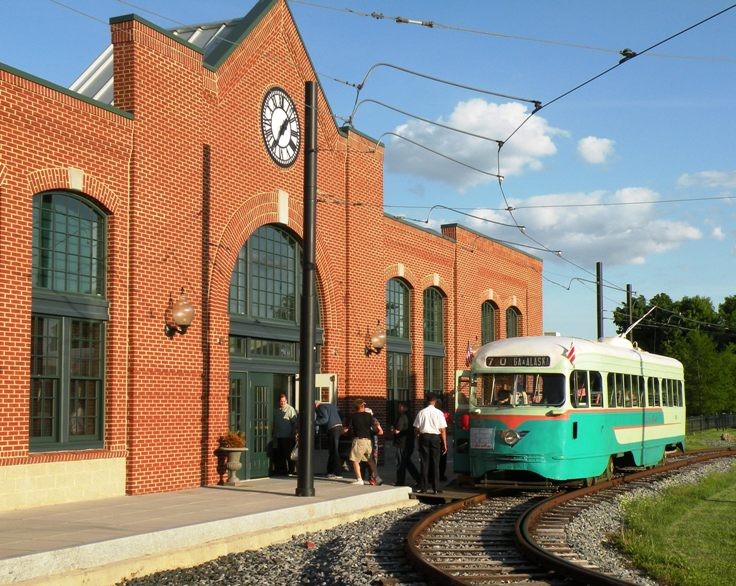National Capital Trolley Museum
Introduction
Text-to-speech Audio
Images
DC Transit 1101, the first PCC streetcar to operate in Washington, D.C.

Backstory and Context
Text-to-speech Audio
The National Capital Trolley Museum was opened soon after the decline of streetcars in Washington DC, in January 1962. The Colesville site was opened in 1965, although the museum was moved to another location in the Northwest Branch Park in 2010. In 2003, a fire destroyed the car barn of the museum, and many streetcars were lost, including a one of a kind prototype PCC streetcar. Currently, the museum has multiple exhibits including ones about the effect of streetcars on suburban development, the car barn which visitors can tour, and Conduit Hall, which exhibits Washington DC's one of a kind conduit system for receiving electricity for its streetcars.
Streetcars in Washinton DC operated from July 1862-January 1962. In the beginning, many independent streetcar companies connected newly developed suburbs to the city via the usage of horse-drawn streetcars. The first to operate was the Washington and Georgetown Railroad company operating from the Navy Yard to Georgetown and north and south on 7th and 14th streets. More city streetcars also began popping up, including the Columbia Railway, and the Rock Creek Railway.
The Rock Creek Railway and the Washington and Georgetown merged in 1895 to form the Capital Traction company, while all other companies, including many going into the suburbs of DC such as the Tenallytown and Rockville Railroad, amalgamated to form the Washington Railway and Electric Company (WRECO). The two companies merged in December 1933 to form the Capital Transit Company. In the 1930s, many suburban lines were shut down including the streetcar lines to Rockville and Chevy Chase, MD, although the 20, the route to Cabin John stayed open.
In 1956, the Capital Transit Company was reorganized due the company being raided by Louis Wolfson, causing the company much pain while Wolfson and shareholders paid massive dividends to themselves. The DC Transit was established with the key to stop operation of streetcars in DC by 1963, which was a promise kept by Roy Chalk. The last streetcars ran on January 28, 1968, and NCTM managed to acquire a couple streetcars from Chalk including a car from 1918, a snow sweeper (which was destroyed in the 2003 fire), the one of a kind prototype PCC (also destroyed), and the first PCC, car 1101. The museum also has additional PCCs, car 1430, a war time produced limited streetcars, acquired from a junk dealer and in need of restoration, car 1540, awaiting restoration, and recently acquired from the Virginia Museum of Transportation, car no. 1470.
Sources
"NCTM Streetcar Collections," National Capital Trolley Museum, accessed December 28, 2020, https://dctrolley.org/carcollection.html.
"National Capital Trolley Museum," Wikipedia, accessed December 28th, 2020, https://en.wikipedia.org/wiki/National_Capital_Trolley_Museum.
"Streetcars in Washington, D.C.," Wikipedia, accessed December 28th, 2020, https://en.wikipedia.org/wiki/Streetcars_in_Washington,_D.C.
National Capital Trolley Musuem
